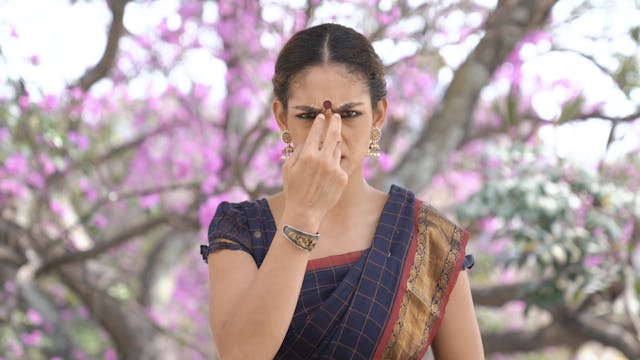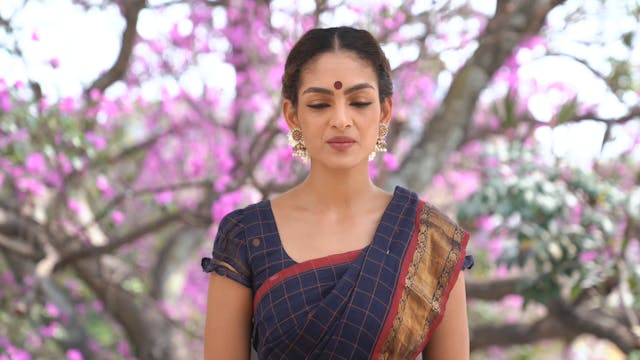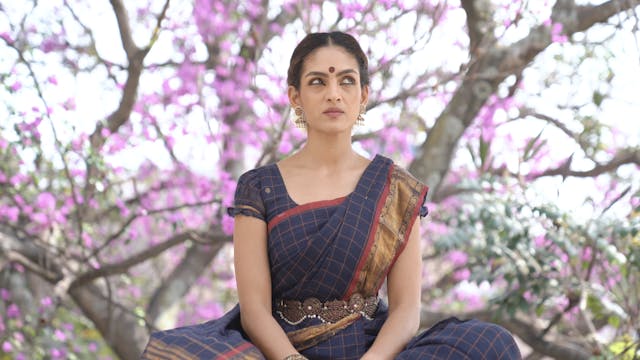Grīva bheda Shloka
Playlist 53: Nātyasāstra
•
26s
The neck movements are considered one of the Mukhaja, or gestures of the face according to the Nātyasāstra.
The movements are used primarily to communicate meaning in the context of gesture.
Please refer to the Shloka below for pronunciation. Please note that the separate movements of the neck when put together in a Shloka form 'Sandhis', or compound words in the Sanskrit language. Words like 'ca', 'thatha', mean "and", "also". The separate words for each movement are also given below the shloka.
sama natōnnata tryasra rećita kunćitānćita
valitā ća nivrttā ća grīva navavidharthata
sama
nata
unnata
tryasra
rećita
kunćita
anćita
valitā
nivrttā
Up Next in Playlist 53: Nātyasāstra
-
Bru bheda Introduction
The eyebrows are considered one of the Mukhaja, or gestures of the face according to the Nātyasāstra.
The movements are used primarily to communicate meaning in the context of gesture.
-
Bru bheda Shloka
The eyebrow movements are considered one of the Mukhaja, or gestures of the face according to the Nātyasāstra.
The movements are used primarily to communicate meaning in the context of gesture.
Please refer to the Shloka below for pronunciation. Please note that the separate movements of the he...
-
Driśti bheda Introduction
The eye movements are considered one of the Mukhaja, or gestures of the face according to the Nātyasāstra.
The movements are used primarily to communicate meaning in the context of gesture.


